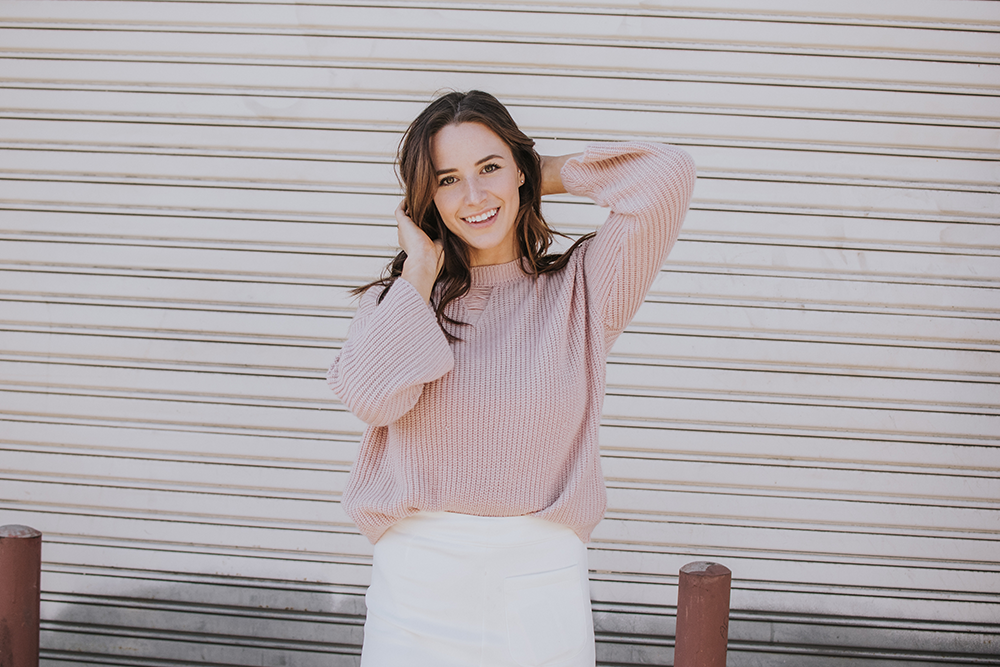
Table of Contents
After Invisalign Orthodontic Aligners
It’s a thrilling moment when our El Dorado Hills, CA Invisalign patients remove their last set of aligners and check out their straight, sparkling new smiles in the mirror. Okay, so they could see their smile all throughout treatment since the aligners are clear but, hey, it’s still an auspicious occasion and we love to be a part of it here at Jeffrey Kwong Orthodontics.
Yet, as momentous as it is, there’s actually a little more work to do after Invisalign, Invisalign Teen or when finishing any orthodontic treatment. When your teeth are shifting into their ideal positions and you’re rocking braces or Invisalign, it’s what we call the active phase of treatment.
This is always followed by the retention phase to ensure your results last a lifetime. Today, we’ll be breaking it down in our guide to exactly what happens after the last Invisalign tray.
Invisalign Treatment: Active Phase Versus Retention Phase
When you wear Invisalign aligners or braces, the appliances exert a gentle force that shifts the teeth into place according to your orthodontist’s specifications. Even though your teeth are organs, they don’t know whether the pressure is from plastic or from metal.
If you take a look at pictures of Invisalign treatment results, it’s pretty astonishing how much the teeth actually move from start to finish. Essentially, the forces from your aligners cause changes all the way through your supporting tissues, from the teeth, to the periodontal ligaments that hold them, the bone, and then the gums.
These changes happen on a cellular level. As tissue and bone remodeling occurs, bone breaks down, the periodontal ligaments stretch out and the teeth get a tiny bit wiggly and move.
Then, new bone and tissue form around the space left behind and secure the teeth in their new homes. It’s really fascinating stuff for tooth nerds worldwide. When you’re actually wearing your Invisalign and these changes are occurring, we refer to it as the active phase of your orthodontic treatment.
Once the force is gone (aka the aligners aren’t putting pressure on your teeth anymore), the teeth have a tendency to want to shift back to their old places, especially when it comes to teenagers since they have lightning speed metabolisms and their bones aren’t fully hardened.
Over time, the alveolar bone will regenerate completely and the periodontal ligaments will shrink back to their regular size. You want your teeth to be in the right places when all of this goes down to cement your new smile.
Complicating matters are the natural changes in our bite that happen as we age. Remember though, when we’re done with the movements, your teeth aren’t frozen in time and space, the aging process is real, my friends, and everything in our body changes.
The only solution to these biological responses was adding the retention phase to orthodontic treatment, which just means wearing a retainer or retainers. A retainer holds the teeth in the desired position and this minimizes age-related changes and lets the gums, bone and periodontal ligaments reorganize around the teeth so there’s less likelihood of drifting or reversion. A retainer retains your results, hence the clever name.
Wearing a retainer after Invisalign or Invisalign Teen is the only way that your teeth will stay as close to where they were when you finished your treatment. A seasoned orthodontist or dentist won’t tell you otherwise. Typically, you’ll wear your retainer full time for a short period and then transition to wearing it only at night when you go to sleep.
In some cases, people will eventually graduate to just wearing their retainer a few nights per week, but this is case dependent and you’ll know what your body is telling you. Follow your orthodontist’s instructions for wearing your retainer so you don’t end up needing another course of treatment, which is something Dr. Jeff has seen more often you’d think. If it did happen to you and your teeth have moved out of place, book a free consultation with us and we’ll get your smile back on track.
Retainer Options After Invisalign
Now that you’re well versed in the point of wearing a retainer, it’s time to chat about your retainer options. One quick note before we really get into it. We’ve heard about people trying to save time by wearing their last Invisalign tray as a retainer and it won’t work.
The aligners aren’t designed for long-term use. After a few weeks, it will stop applying the necessary force to prevent reversion and it will start to break down.
Plus, it will get pretty nasty and yellow. We can use our iTero scanner and take digital impressions to make your customized retainer in a snap. After putting in the time, expense and effort to go through Invisalign treatment, don’t skip the retainer step.
There are two main types of retainers we offer:
- Fixed Retainers: A fixed retainer consists of a thin, metal wire that’s glued to the back of the teeth, on the tongue-side. These retainers stay put permanently and offer extra insurance that your teeth won’t move after Invisalign treatment. Permanent doesn’t mean indestructible though!
It means that it can stay there as long as you want to hold your teeth in place, and as long as you’re willing to clean it. It’s unobtrusive and no one will be able to see you’re wearing it. Even better? You’ll never lose it! A bonded retainer after Invisalign is pretty common, especially on the bottom teeth if you had lower crowding before starting your treatment. A bonded retainer is also helpful when a patient presents with a space between their top front teeth.
- It will stop the space from reoccurring when you’re done with Invisalign.There are many styles of fixed lower retainers and we opt for the kind of permanent retainer that will be easiest to clean (because, let’s face it, if it’s hard to clean, people aren’t going to clean it), AND provide the most rigidity. What I want in a permanent retainer is a wire that’s not easily bent, and not connected to every tooth; can you guess why? If you accidentally eat something hard, your permanent retainer could act like braces.
- Removable Retainers: Removable retainers come in two forms: the traditional wire retainer, known as a Hawley retainer, and a clear retainer that looks like an Invisalign tray, often referred to as a 3D or Essix retainer. The wire retainer consists of a custom plastic piece that sits against the roof of your mouth and a thin, metal wire that wraps around the front of the teeth.
While it’s not as noticeable as braces and it’s more streamlined, you can see the wire component. However, wire retainers are great in certain cases. Clear, removable retainers slip over the teeth just like your Invisalign and many of our Invisalign patients choose this type because it’s what they’re used to and you can barely tell you’re wearing it. They’re equally as comfortable as aligners and made from a durable material.
So, how long do Invisalign retainers last? If cared for properly, both clear and wire retainers can last years and at Jeffrey Kwong Orthodontics, we actually have an in-office Essix retainer program that includes replacement retainers in the cost for five years. So, if Fido eats your retainer, you can call us and we’ll be able to quickly give you a new one to prevent any tooth movement. Another thing to note is that retainers should be replaced as soon as you notice signs of wear since they’re only effective if they fit perfectly and apply the correct amount of force.
Looking for Invisalign treatment? Book an Appointment!
Caring for Your Retainers
Retainers are pretty low maintenance appliances but there are some things to keep in mind so they can do their job and hold your smile in place:
- For both Hawley and Essix retainers, brush both sides every day with a soft toothbrush; we prefer without toothpaste (Dawn dish soap actually works great!). Every so often, give it a deeper clean by soaking it in a retainer-cleaning solution or Efferdent. For a DIY mixture, combine equal parts water and distilled white vinegar in a cup and let your appliance sit in the solution for 10 to 20 minutes.
- If you have a bonded retainer after Invisalign, it’s essential to brush around the wire really well at least twice a day and continue to floss once daily. The wire can trap plaque and food particles so keeping it clean will prevent tooth decay and gum disease. An interdental brush can be a good tool for getting around the wire too. Check out our Youtube video for cleaning your lower permanent retainer.
- Today’s retainers are strong but they have their limitations, so handle them with care. If your retainer is broken or lost, call our office immediately and get a replacement so your teeth don’t move out of place. You can imagine how #awkward the conversation of getting braces back on is, so bite the bullet and tell your parents (this is what good communication entails).
- Always take removable retainers out to eat and drink anything aside from plain water. Hot foods or beverages can warp the retainer and snacks and drinks will stain it or, worse, cause damage.
- Take your retainers out when swimming and playing sports.
- Store your retainer in its case whenever you’re not wearing it. When you take it out to eat, never ever put it in a napkin for safekeeping. We can’t tell you how many times this has led to a retainer accidentally being thrown away. Best case, you’ll have to dig around in a trashcan to find it and worst case, you never see it again and you’ll have to purchase a new one.
- Don’t attempt to adjust your retainer yourself. If it doesn’t seem like it’s fitting correctly or needs a tweak, make an appointment and we’ll do it for you.
- Retainers hate hot water, car dashboards in the middle of summer, the washing machine, your pockets and those aforementioned napkins. Again, keep retainers safe and sound in their case when they’re not in your mouth and away from extreme heat.
- Bring your retainer with you to your retainer check appointments.
- Keep your retainers away from pets. If you think that you can put your retainer down, turn your head away and that your dog won’t get to it, guess again.
A Few Last Words on Your Invisalign Aftercare
Wearing a retainer after Invisalign treatment is a big part of your aftercare but there are a few other steps you’ll want to take to keep your new smile going strong:
- Continue to Brush and Floss Like a Champ ”“ Once the aligners come off, brush at least twice daily with a fluoride toothpaste and floss once a day. The good thing about Invisalign treatment is you don’t have to change your oral hygiene routine during it, so you should be used to the drill. If you’re cavity-prone, adding a fluoride mouthwash to the mix can be beneficial too. Thankfully, straight teeth are easier to keep clean. Therefore, giving plaque the boot will be a breeze when you reach the treatment finish line.
- Visit Your General Dentist for Regular Checkups and Cleanings ”“ Regular dental cleanings are super important during your active treatment and also afterwards because only a professional cleaning can remove hardened plaque. Routine checkups are equally as essential to your oral health. Your dentist will ensure your teeth and gums are in excellent shape and your smile is healthy with an exam and x-rays. If a problem is spotted, catching it early will mean easier, more affordable treatment.
- Eat a Well-Rounded, Healthy Diet ”“ A healthy diet full of the necessary vitamins and minerals, fruits and veggies, lean protein, low-fat dairy, complex carbohydrates and good fats can go a long way in boosting your oral health. Enjoy sweets and sugary drinks in moderation to keep cavities at bay.
- Wear a Mouthguard When Playing Sports ”“ Whenever you’re playing sports or doing any physical activity that carries the risk of dental trauma (i.e., skateboarding, bicycling), you should rock a mouthguard. The over-the-counter boil-and-bite variety will do the trick. Wearing a mouthguard is an inexpensive, easy way to protect your teeth. After finishing Invisalign treatment, losing a tooth due to an elbow to the face or a nasty spill would be a serious bummer.
- The worst part is that it will involve a lifetime of care for those teeth that are injured. Not all sports require them, including soccer and baseball, which are big offenders for dental injuries, so you’ll have to take it upon yourself to enforce a personal mouthguard rule. Remember, we support our local athletes, so even if you aren’t a patient, call us to schedule an appointment for a no-obligation complimentary custom mouthguard.
Hopefully our guide to what happens after the last Invisalign tray gives you a good idea of the steps you’ll need to take post-treatment to keep your beautiful smile in top-notch condition. If you ever have questions or concerns after finishing Invisalign, don’t hesitate to give our office a call. Dr. Jeff and the team are always here to help. If you haven’t kicked off treatment yet but want a straighter, healthier smile, contact Jeffrey Kwong Orthodontics to book a free consultation at our El Dorado Hills, CA orthodontic office. You can request an appointment online or call us at 916-933-0532. Dr. Jeff will evaluate your bite and let you know if Invisalign is right for you.




How much does it cost to get an ESSIX replacement retainer after completing Invisalign?
Thanks for this information. After wearing Invisalign for about 22 hours a day and leaving them uncleaned can cause them to be discolored and smelly. One should clean their aligners and give them a proper wash to maintain strong & healthy teeth. Uncleaned or poor aligners can cause infection too.
Great, informative post! I’m sure it’s going to help a lot of people 🙂